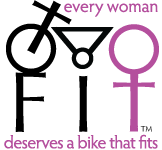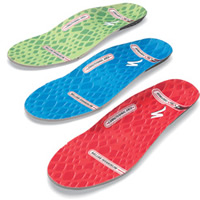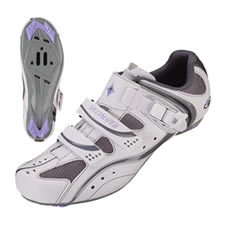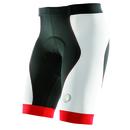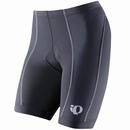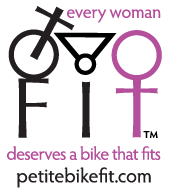
Why would I spend time discussing handlebars when your bike already comes with a pair? A set of alloy handlebars weighs about 50 grams less than a large potato. We’re talking about something so light it almost seems silly to discuss, right? Wrong.
Handlebars in widths less than 40 cm were not even available until around 1998. Even now, some ten years later, only a handful of companies produce them in size 36 and 38 and Ritchey is one of them. In 1999, Ritchey also introduced their “Ergonomic” or “anatomic” handlebars, designed to support more natural hand positions in the drops, and tops of the bars. Ritchey’s WCS Logic II alloy handlebars felt great in my hands. So why, after going to the trouble of wrapping them with pretty pink tape and riding with them for a week, did I upgrade to a set of carbon bars, costing nearly five times as much? It wasn’t because they weigh less. The difference between the two is only 10 grams–a mere fraction of the weight of 8 oz of water. Although carbon fiber is lightweight, it’s also strong and can be molded into shapes otherwise unattainable with alloy without substantially increasing weight.
However, the most important reason carbon fiber is used for handlebars is comfort.
If your bike is mostly aluminum, which has a notoriously stiff ride, and you’re riding more than 40 or 50 miles at a time on surfaces paved with chip seal, or those resembling an old-fashioned washboard, you’ve felt the hum in your body long after you gotten off your bike. This “road buzz” is the reason you might seriously consider investing in carbon fiber handlebars. Carbon fiber, well known for its shock absorptive, vibration dampening quality, is nothing short of miraculous. Adding carbon fiber to your bike as a fork, seatpost or handlebars, will definitely improve the quality of your ride.
Are these handlebar choices just another trend in excessive bicycling consumerism? Until recently, I thought so. Each woman has her own preference for shape, size, and manufacturing material. But remember, comfort should be your first consideration. The best way to decide what’s right for you, after determining your correct handlebar size, is to get your hands on as many bars as possible– not always an easy task.
Ritchey’s handlebars offer an ergo design with just a little extra room to move around. I love the ergo bend in the curve as it matches the same position of my hands with a slight angle forward and down.
They also offer an ergo carbon alternative with a slightly wider, flattened top bar for upright riding comfort. Both of these bars gave me a feeling of confidence and control especially while in the drops. Many racers still prefer to ride with alloy bars. In the event of a crash, alloy will bend rather than shatter and they’ll still be able to ride. I don’t know about you, but if I crash and either shatter or bend my handlebars, chances are I’m not pedaling anywhere. I ride a Rodriguez that offers a good deal of shock absorption (it’s made of S3 steel), and I have ridden with Ritchey WCS Carbon Evolution handlebars on rides of extended distances on unpredictable road surfaces. Switching from alloy to carbon was simplified by the calibrated transition lines on the carbon drops for even brake lever placement. Check out Ritchey’s website at www.ritcheylogic.com and read about their innovative president and lead designer, Tom Ritchey, who first taught himself to build frames as a teenager thirty years ago. He still logs 10,000 miles a year on his bike. I’m impressed. For a comparison of different handlebar options and how to determine your correct size, click here!
